The 100 most inspiring musicians of all Time: Antonio Vivaldi
Antonio Vivaldi (b. March 4, 1678, Venice, Republic of Venice [Italy]—d. July 28, 1741, Vienna, Austria)
Antonio Lucio Vivaldi was an Italian composer and violinist who left a decisive mark on the form of the concerto and on the style of late Baroque instrumental music.
Life
Vivaldi’s main teacher was probably his father, Giovanni
Battista, who in 1685 was admitted as a violinist to the
orchestra of the San Marco Basilica in Venice. Antonio,
the eldest child, trained for the priesthood and was ordained
in 1703.
He made his first known public appearance playing
violin alongside his father in the basilica in 1696. He became
an excellent violinist, and in 1703 he was appointed violin
master at the Ospedale della Pietà, a home for abandoned
or orphaned children. The Pietà specialized in the musical
training of its female wards, and those with musical aptitude
were assigned to its excellent choir and orchestra.
Vivaldi had dealings with the Pietà for most of his career:
as violin master (1703–09; 1711–15), director of instrumental
music (1716–17; 1735–38), and paid external supplier of
compositions (1723–29; 1739–40).
Vivaldi’s earliest musical compositions date from his
first years at the Pietà. Printed collections of his trio
sonatas and violin sonatas respectively appeared in 1705
and 1709, and in 1711 his first and most influential set of
concerti for violin and string orchestra (Opus 3, L’estro
armonico) was published by the Amsterdam music-publishing
firm of Estienne Roger. In the years up to 1719, Roger published
three more collections of his concerti (opuses 4, 6,
and 7) and one collection of sonatas (Opus 5).

Vivaldi made his debut as a composer of sacred vocal
music in 1713, when the Pietà’s choirmaster left his post
and the institution had to turn to Vivaldi and other composers
for new compositions. He achieved great success
with his sacred vocal music, for which he later received
commissions from other institutions. Another new field
of endeavour for him opened in 1713 when his first opera,
Ottone in villa, was produced in Vicenza. Returning to Venice,
Vivaldi immediately plunged into operatic activity in the
twin roles of composer and impresario.
From 1718 to 1720 he worked in Mantua as director of secular music for that city’s governor, Prince Philip of Hesse-Darmstadt.
This was the only full-time post Vivaldi ever held; he seems to have preferred life as a freelance composer for the flexibility and entrepreneurial opportunities it offered.
Vivaldi’s major compositions in Mantua were operas, though he
also composed cantatas and instrumental works.
The 1720s were the zenith of Vivaldi’s career. Based
once more in Venice, but frequently traveling elsewhere,
he supplied instrumental music to patrons and customers
throughout Europe. Between 1725 and 1729 he published
five new collections of concerti (opuses 8–12).
After 1729 Vivaldi stopped publishing his works, finding it more profitable to sell them in manuscript to individual purchasers.
In the 1730s Vivaldi’s career gradually declined. The
French traveler Charles de Brosses reported in 1739 with
regret that his music was no longer fashionable. Vivaldi’s
impresarial forays became increasingly marked by failure.
In 1740 he traveled to Vienna, but he fell ill and did not
live to attend the production there of his opera L’oracolo in
Messenia in 1742. The simplicity of his funeral on July 28,
1741, suggests that he died in considerable poverty.
Instrumental Music
Almost 500 concerti by Vivaldi survive. More than 300 are
concerti for a solo instrument with string orchestra and
continuo. Of these, approximately 230 are written for solo
violin, 40 for bassoon, 25 for cello, 15 for oboe, and 10 for
flute. There are also concerti for viola d’amore, recorder,
mandolin, and other instruments. Vivaldi’s remaining
concerti are either double concerti (including about 25
written for two violins), concerti grossi using three or
more soloists, concerti ripieni (string concerti without a
soloist), or chamber concerti for a group of instruments
without orchestra.
Vivaldi perfected the form of what would become the
Classical three-movement concerto. Indeed, he helped
establish the fast-slow-fast plan of the concerto’s three
movements. Perhaps more importantly, Vivaldi was the
first to employ regularly in his concerti the ritornello form,
in which recurrent restatements of a refrain alternate with
more episodic passages featuring a solo instrument.
Vivaldi’s bold juxtapositions of the refrains (ritornelli) and
the solo passages opened new possibilities for virtuosic
display by solo instrumentalists.
The fast movements in his concerti are notable for their rhythmic drive and the boldness of their themes, while the slow movements often
present the character of arias written for the solo instrument.
Several of Vivaldi’s concerti have picturesque or allusive
titles. Four of them, the cycle of violin concerti entitled
The Four Seasons (Opus 8, no. 1–4), are programmatic in a
thoroughgoing fashion, with each concerto depicting a different
season of the year, starting with spring. Vivaldi’s
effective representation of the sounds of nature inaugurated
a tradition to which works such as Ludwig van
Beethoven’s Pastoral Symphony belong. Vivaldi also left more
than 90 sonatas, mainly for stringed instruments.
Vocal Music
More than 50 authentic sacred vocal compositions by
Vivaldi are extant. They range from short hymns for solo
voices to oratorios and elaborate psalm settings in several
movements for double choir and orchestra. He composed
some 50 operas (16 of which survived in their entirety) as
well as nearly 40 cantatas. Many of Vivaldi’s vocal works
exhibit a spiritual depth and a command of counterpoint
equal to the best of their time. Moreover, the mutual
independence of voices and instruments often anticipates
the later symphonic masses of Joseph Haydn and Wolfgang
Amadeus Mozart.
Vivaldi – The Four Seasons, Op. 8 (Sheet Music)
Download Vivaldi’s sheet music arrangeents for piano and guitar from our Library.
Browse in the Library:
| Artist or Composer / Score name | Cover | List of Contents |
|---|---|---|
| All Sondheim Vol IV Music and lyrics |
 |
All Sondheim Vol IV Music and lyrics |
| All That Jazz piano-vocal Arrangement |
 |
|
| All The Things You Are (Guitar And Tabs) | All The Things You Are (Guitar And Tabs) | |
| All The Things You Are (Guitar And Tabs) (Musescore File).mscz | ||
| All The Things You Are By Jerome Kern Guitar Transcription |
 |
|
| All The Things You Are Jerome Kern Oscar Hammerstein 2nd 1940 Jazz Standard (Vintage sheet music) |
 |
|
| All Time Standards (Songbook) Jazz Guitar Tablature Chord Melody Solos (Jeff Arnold) |
 |
All Time Standards (Songbook) Jazz Guitar Tablature Chord Melody Solos (Jeff Arnold) |
| All Time Standards Piano (Arr. Gabriel Bock) |
 |
All Time Standards Piano (Arr. Gabriel Bock) |
| All You Need Is Ears George Martin with Jeremy Hornsby 1979 (Book) The story o the recording genius who created The Beatles |
 |
|
| Allan Holdsworth Just for the curious book Guitar with Tablature |
 |
|
| Allan Holdsworth Melody Chords For Guitar |
 |
|
| Allan Holdsworth Super Guitarist with TABs |
 |
Allan Holdsworth Super Guitarist with TABs |
| Alle prese con una verde Milonga (Paolo Conte) | ||
| Allevi, Giovanni – Back To Life |
 |
|
| Allie Wrubel – Gone with the Wind |
 |
|
| Allman Brothers Guitar Songbook |
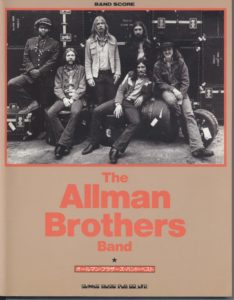 |
Allman Brothers Guitar Songbook |
| Allman Brothers, Best Of The (Piano, Vocal, Guitar) |
 |
Allman Brothers, Best Of The (Piano, Vocal, Guitar) |
| Allman Brothers, The – The Definitive Collection For Guitar Vol 1 with Tablature |
 |
Allman Brothers, The – The Definitive Collection For Guitar Vol 1 |
| Alma Redemptoris Mater |
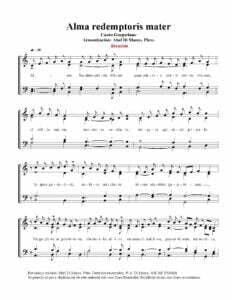 |
|
| Almeno tu nell’universo (Mia Martini) | ||
| Almir Chediak Ivan Lins Guitar Songbook Vol 2 |
 |
Ivan Lins Guitar Songbook Vol 1 by Almir Chediak |
| Alok – Hear Me Now Sheet Music |
 |
|
| Alone together (Howard Dietz & Arthur Schwartz) | Alone together (Howard Dietz Arthur SchwArtz) | |
| Alone Together (Musescore File).mscz | ||
| Alone Togheter Guitar Solo Transcription Jazz Standard |
 |
|
| Alphaville Forever Young (piano & Guitar) |
 |
Alphaville Forever Young (piano & Guitar) |
| Also Sprach Zarathustra Op. 30 – Richard Strauss (Musescore File).mscz | ||
| Alternative Rock Sheet Music Collection |
 |
Alternative Rock Sheet Music Collection |
| Always on my mind – Elvis Presley – easy arrangement for piano, with fingering |
 |
|
| Amadeus – W.A. Mozart (film score arr. for piano solo by D. Fox) |
 |
Amadeus – W.A.Mozart |
| Amadeus (original soundtrack piano solo arrangements) |
 |
Amadeus (Film score book) Piano Solos |
| Amalia Rodriguez FADOS Melodias De Sempre (GUITAR) |
 |
Amalia Rodriguez FADOS Melodias De Sempre (GUITAR) |
| Amando amando (Renato Zero) | ||
| Amar Pelos Dois (Salvador Sobral) | ||
| Amarcord (Nino Rota) | ||
| Amazing Grace – Tradicional (Piano ) |
 |
|
| Amazing Grace Traditional (Jazzy ver. sheet music) |
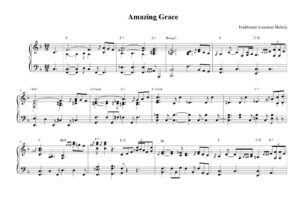 |
|
| Amazing Phrasing – Guitar 50 Ways to Improve Your Improvisational Skills (Guitar TABs Amazing Phrasing) (Tom Kolb) |
 |
Amazing Phrasing – Guitar 50 Ways to Improve Your Improvisational Skills (Guitar TABs Amazing Phrasing) (Tom Kolb) |
| Amelie Poulain – 6 pieces for piano – Yann Tiersen – Yann Tiersen |
 |
 |
| America (My Country ‘Tis of Thee Easy Piano Level 2 |
 |
|
| America Greatest Hits Piano Vocal Guitar chords |
 |
America Greatest Hits Piano Vocal Guitar chords |
| America Greatest Hits (piano & Guitar) |
 |
America greatest |
| America Horse With No Name Piano vocal | America Horse With No Name Piano vocal | |
| America’s Songs The Stories Behind The Songs Of Broadway, Hollywood, And Tin Pan Alley (Philip Furia, Michael Lasser) Book |
 |
|
| American Folk Songs For Guitar with Tablature |
 |
American Folk songs |
| American Folk Songs, My First Book of – Bergerac |
 |
|
| American Indian Melodies A. Farwell Op.11 (1901) |
 |
American Indian Melodies A. Farwell Op.11-min |
| American Pie (sheet music) |
 |
|
| American Popular Music (Book) by Larry Starr and Christopher Waterman |
 |
|
| Americana – Alegre, Magín (Guitarra) | Americana – Alegre, Magín (Guitarra) | |
| Amici Miei (Carlo Rustichelli) | ||
| Amor mio (Battisti) | ||
| Amore bello (Claudio Baglioni) | ||
| Amy Beach – Op.15 Four Sketches in Autumn |
 |
|
| Amy Grant – Breath Of Heaven | ||
| Amy MacDonald This Is The Life |
 |
AMY MACDONLAD |
| Amy Winehouse – Valerie |
 |
|
| Amy Winehouse – Valerie (sheet music) |
 |
|
| Amy Winehouse Amy Amy Amy |
 |
|
| Amy Winehouse Back To Black Songbook |
 |
Amy Winehouse Back To Black Songbook |
| Amy Winehouse Frank Songbook |
 |
Amy Winehouse Frank |
| Amy Winehouse I Heard Love Is Blind |
 |
|
| Amy Winehouse Just Friends |
 |
|
| Amy Winehouse Rehab |
 |
|
| Amy Winehouse You Know Im No Good |
 |
|
| An affair to remember (Harry Warren) | ||
| An American In Paris An George Gershwin (Concert Band)An American In Paris An George Gershwin (Concert Band) Arr. by Naohiro Iwai |
 |
|
| An American Tail – The Marketplace – James Horner | ||
| An Introduction To Bach Studies (eBook) |
 |
|
| An Irish Blessing (Musescore File).mscz | ||
| An Irish Blessing (SATB) Choral | An Irish Blessing (SATB) | |
| Analisis musical claves para entender e interpretar la Música (M. y A. Lorenzo) Español |
 |
|
| Analysis Of Tonal Music An Schenkerian Approach Allen Cadwallader and David Gagné (Book) |
 |
|
| Analyzing Bach Cantatas by Eric Chafe (eBook) |
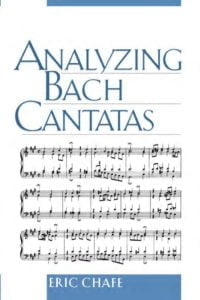 |
|
| Analyzing Schubert by Suzannah Clark (Cambridge Un. Press) (eBook) |
 |
|
| Anastacia Not That Kind Songbook |
 |
Anastacia songbook |
| Anastasia Once Upon A December arr. by John Brimhall (Piano Solo 2 Versions Easy And Intermediate) |
 |
|
| Anastasia Sheet Music songbook Piano & vocal |
 |
Anastasia Sheet Music songbook Piano & vocal |
| Ancora ancora ancora (Mina) | ||
| Ancora qui (Django Unchained) Elisa – Ennio Morricone | ||
| And the Waltz goes on (Anthony Hopkins) | ||
| Andante (from String Quartet op. 22) P. I. Tchaikovsky | ||
| Anderson Freire – So Voce Piano |
 |
|
| Andras Schiff – Music Comes Out Of Silence Book |
 |
|
| Andre Gagnon – L’air Du Soir |
 |
|
| Andre Gagnon – Le Reve De L’automne (sheet music Collection) |
 |
Andre Gagnon – Le Reve De L’automne (sheet music Collection) |
| Andre Gagnon – Les Jours Tranquilles | Andre Gagnon – Les Jours Tranquilles | |
| Andre Gagnon – Meguriai |
 |
|
| Andre Gagnon – Nelligan |
 |
|
| Andre Gagnon – Petite Nostalgie |
 |
|
| Andre Gagnon – Reves D’Automne | Andre Gagnon – Reves D’Automne | |
| Andre Gagnon – The Very Best Of Andre Gagnon (Sheet Music Songbook) |
 |
Andre Gagnon – The Very Best Of Andre Gagnon (Sheet Music Songbook) |
| Andre Gagnon Ciel D’Hiver |
 |
|
| Andre Gagnon Entre Le Boeuf et l’Ane Gris Musique Traditionelle |
 |
|
| André Gagnon L’air Du Soir |
 |
|
| Andre Gagnon Neiges |
 |
|
| André Gagnon Nelligan |
 |
|
| André Gagnon Origami |
 |
|
| André Gagnon Pensées Fugitives |
 |
|
| Andre Gagnon Pensées Fugitives |
 |
|
| André Gagnon Piano Solitude |
 |
Gagnon, André Piano Solitude |
| Andre Gagnon Prologue |
 |
|
| André Gagnon Selection Speciale de chansons (partitions musicales) |
 |
André Gagnon Selection Speciale de chansons (partitions musicales) |
| André Gagnon Un Piano Sur La Mer (Piano Solo Partition Sheet Music) | Gagnon André Un Piano Sur La Mer (Piano Solo Partition Sheet Music) | |
| Andre Popp Paul Mauriat Love Is Blue Piano Solo Arr. |
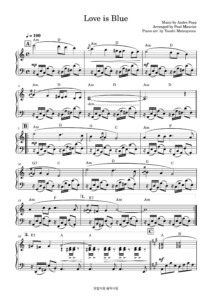 |
|
| André Previn – Play Like André Previn no. 1 |
 |
Andre Previn sheet music |
| Andre Previn – The Genius of (Piano Solos sheet music) |
 |
The genius of André Previn |
| Andre Rieu La Vie Est Belle (Songbook Collection As Performed By André Rieu) |
 |
Andre Rieu La Vie Est Belle (Songbook Collection As Performed By André Rieu) |
| Andrea Bocceli – Time To Say Goodbye | ||
| Andrea Boccelli – Time To Say Goodbye |
 |
|
| Andrea Bocelli Romanza songbook (Guitar & Voice) |
 |
Andrea Bocelli Romanza songbook |
| Andrea Bocelli – Anthology (songbook) |
 |
 |
| Andrea Bocelli – Con te partiro (Time to say Goodbye) Piano Solo arr | Andrea Bocelli – Con te partiro (Time to say Goodbye) Piano Solo | |
| Andrea Bocelli – Con te partiro (Time to say Goodbye) Piano Solo.mscz | ||
| Andrea Bocelli – The Best Of Songbook |
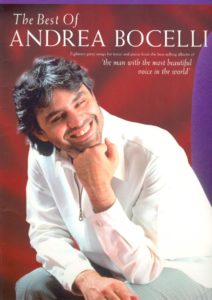 |
Andrea Bocelli best of |
| Andrea Bocelli Celine Dion The Prayer Easy Piano And Vocal By David Foster, Carole Bayer Sager, Alberto Testa And Tony Renis |
 |
|
| Andrea Bocelli Celine Dion – The Prayer – Easy Piano and Vocal by David Foster, Carole Bayer Sager, Alberto Testa and Tony Renis.mscz | ||
| Andrea Bocelli Cieli Di Toscana (Piano, guitar & Vocal) |
 |
Andrea Bocelli Cieli Di Toscana |
| Andrea Bocelli Sogno Songbook |
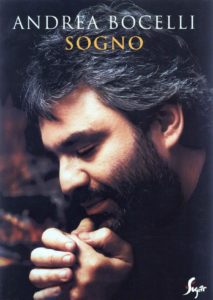 |
Andrea Bocelli sogno |
| Andrea Bocelli The Prayer |
 |
